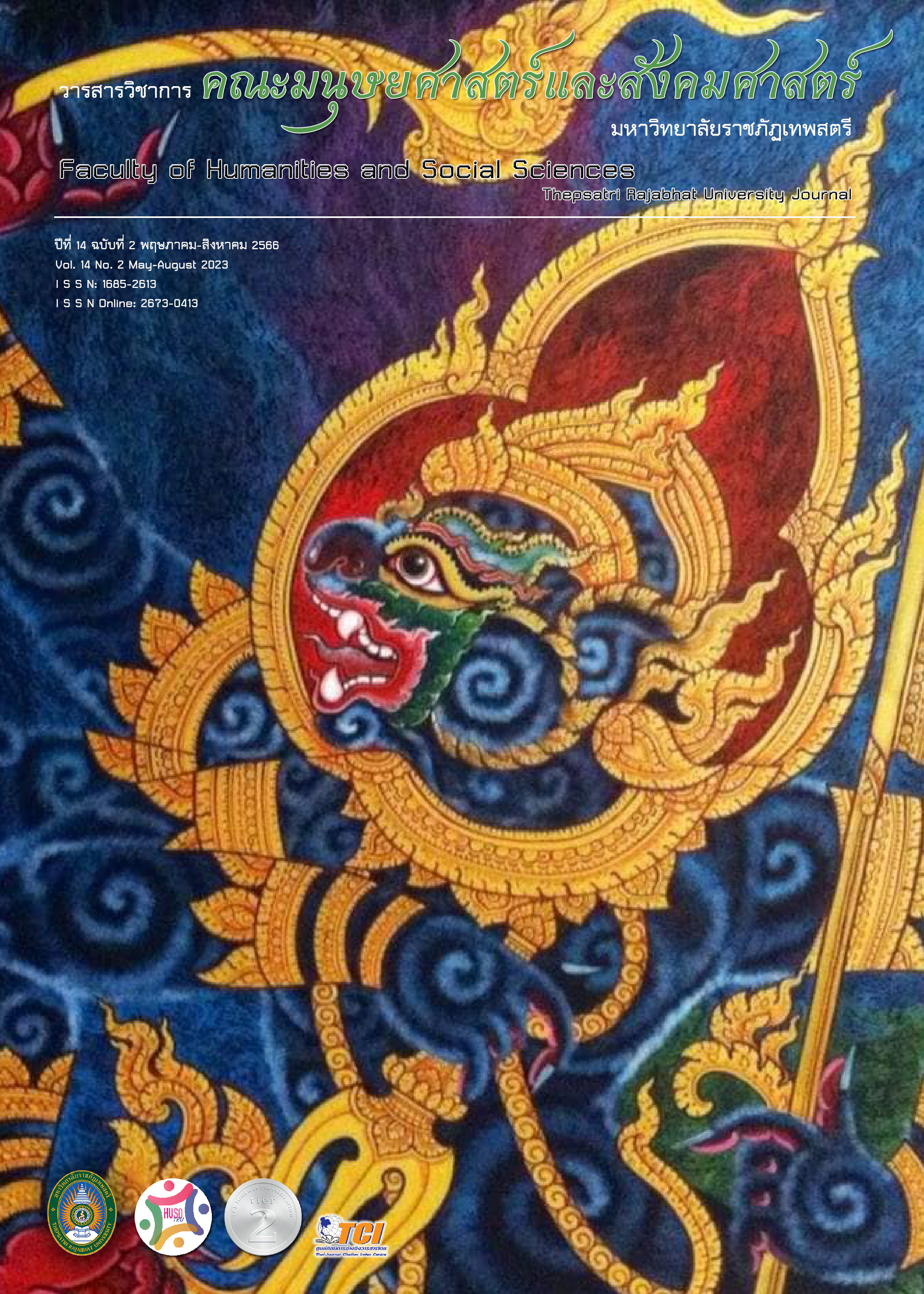“Space” in the Novel, Futon by Tayama Katai
Main Article Content
Abstract
Futon is a novel written by Tayama Katai and the story was based on his real-life experience involving his female student named Okada Michiyo. Futon is a naturalism novel that strongly expresses humans’ dark side, especially desires, sexual longings, and jealousy. Moreover, the story is also full of situations that highlight morality challenges. This article aims to study the spatial meaning of different places in the story including, the house, the capital city, the hometown, and the bedroom. It was found that the “spaces” portrayed in the novel were not just physical spaces. The male protagonist's house represented a space of change. The capital city also represented the meaning of space as Yoshiko’s pursuit of freedom. In the story, the spaces also reflected the ideas of Japanese people during the Meiji era that they were trying to change and seek their own freedom by heading towards the capital city to pursue their dreams, new life, and gender equality. However, society at that time did not fully accept women's equal rights to men. The hometown was, therefore, a space of acceptance and submission of women to be under patriarchy. As for the bedroom, it was not only represented as a symbol of a carnal desire but also a space of memory and nostalgia that could never be regained.
Downloads
Article Details

This work is licensed under a Creative Commons Attribution-NonCommercial-NoDerivatives 4.0 International License.
The content and information presented in articles published in the Academic Journal of the Faculty of Humanities and Social Sciences, Thepsatri Rajabhat University, are solely the opinions and responsibilities of the respective authors. The editorial board of the journal neither necessarily agrees with nor assumes any responsibility for such content in any manner whatsoever.
All articles, information, content, and images published in the Academic Journal of the Faculty of Humanities and Social Sciences, Thepsatri Rajabhat University, are the copyright of the journal. Any person or organization wishing to reproduce, disseminate, or otherwise utilize all or any part thereof must obtain prior permission from the Academic Journal of the Faculty of Humanities and Social Sciences, Thepsatri Rajabhat University.
References
เดือนเต็ม กฤษดาธานนท์. (2558). นวนิยายญี่ปุ่นสมัยใหม่. กรุงเทพฯ: โครงการตำราคณะอักษรศาสตร์จุฬาลงกรณ์มหาวิทยาลัย.
ปิยะนุช วิริเยนะวัตร์. (2549, มกราคม - มิถุนายน). ภาพผู้หญิงที่สะท้อนในงานเขียนสมัยเมจิ. วารสารศิลปศาสตร์, 6(1), 196 - 228.
สหะโรจน์ กิตติมหาเจริญ. (2554). “พื้นที่” ในเรื่องสั้นดรรชนีนางของอิงอร. การประชุมทางวิชาการระดับชาติ “ภาษา วรรณคดีไทย และการสอนภาษาไทยในฐานะภาษาต่างประเทศ: การเรียนรู้และสร้างสรรค์จากสังคมไทยสู่สังคมโลก (หน้า 310 – 324). กรุงเทพฯ: มหาวิทยาลัยศรีนครินทรวิโรฒ.
สุรเดช โชติอุดมพันธ์. (2559). อ่านเมืองเรื่องคนกรุง: วรรณกรรม วิถีความสัมพันธ์และภาพแทนของพื้นที่. กรุงเทพฯ: โครงการเผยแพร่ผลงานวิชาการคณะอักษรศาสตร์ จุฬาลงกรณ์หาวิทยาลัย.
สุรางค์ศรี ตันเสียงสม. (2551). ประวัติศาสตร์ญี่ปุ่นสมัยใหม่. กรุงเทพฯ: สถาบันเอเชียศึกษา จุฬาลงกรณ์มหาวิทยาลัย.
วัลยา วิวัฒน์ศร. (2541). มิติสถานที่ในนวนิยายของฟร็องซัวส์ โมริยัค. กรุงเทพฯ: โครงการตำราคณะอักษรศาสตร์ จุฬาลงกรณ์มหาวิทยาลัย.
生駒夏美. (2012, March). 田山花袋『布団』にみる日本の近代化とジェンダー. ジェンダー &セクシュアリティ. 国際基督教大学ジェンダー研究センター ジャーナル, 7, 5 - 36.
小谷野 敦. (2008, September). 岡田美知代と花袋「蒲団」について. 日本研究, 38, 297 - 313.
田山花袋. (1993).『布団・一平卒』. 東京: 岩波書店.
Jian Y. (2018, August). Ethical Anguish, Ethical Conflict and Ethical Choice: An Exploration of Futon from the Perspective of Ethical Literary Criticism. Interlitteraria, 23(1), 82 - 88.


